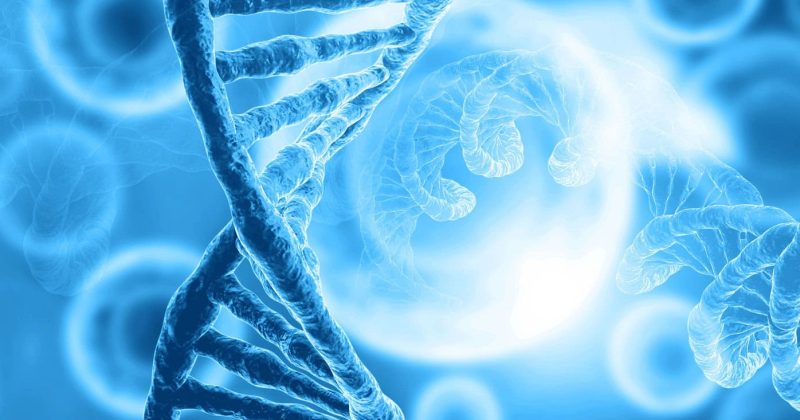What is a “web cache,” and how does this affect WordPress caching on your website? Should you even care about web caching and the like?

Not to worry. These geeky concepts only matter if you want people to visit your website. (Sorry, I couldn’t resist that…)
Why it matters… Most of your website’s audience would expect your site to load within 3 seconds. Unsurprisingly, Google keeps emphasizing website speed in its search algorithm as one of the important ranking factors.
One of the most beneficial technologies available, web caching improves website speed, making sites noticeably faster. Higher website speed ultimately leads to better SEO scores and higher user satisfaction, which results in better conversions. If you are selling products and services online, that equates to more revenue.
So, let’s see how a web cache can improve your website performance.
What is Web Caching Anyway?
A cache is a collection of temporary files devices use to speed up or enhance the user experience. It is a way to store regularly accessed or reusable data temporarily.
Websites are visited hundreds and thousands of times a month. Each time the browser requests a web page, the server must perform a series of complex calculations that can be time-consuming.
It recovers the posts, finds sidebar widgets, generates header and footer, and many other tasks that involve fetching. In most cases, the result will be the same. So, it would be easier and faster if the server remembers the final results and does not require processing each request separately.
This is exactly what caching does!
When the user visits your website, a cache takes a snapshot of your webpage. It then stores and serves the image to the visitor. So, when users make repeated requests with their browser, they are often fulfilled from a cache. There is no need to go to the server again to fetch every item.
Web documents such as web images, pages, and other files are stored as a web cache. When the documents pass through the web cache system, it stores copies of those documents.
Caching helps deliver your website’s information quickly to visitors instead of making them wait for a series of requests that would otherwise slow the user experience.
How Cached Pages are Served

The easiest way to understand the caching process is to know how a web page is served.
Suppose, for example, you have WordPress caching on your WordPress website.
The first time a visitor accesses the homepage (i.e., the request is processed on the server), the webpage shown is converted into an HTML file and sent to your visitor’s web browser.
Now, as caching is enabled, the server stores this HTML file in the extremely fast random access memory (or RAM). So now, the next time that visitor views the homepage, the server does not need to go through the process again. It just sends an already-prepared HTML file to the browser.
What Does a Web Cache Do?
The temporary storage of web documents like HTML images and pages in a web cache reduces the usage of bandwidth, perceived lag, and server load. Web caching allows a browser to load the frequently accessed images quickly. The memory cache enhances the speed of screens appearing on a computer.
In the case of phone apps, a cache stores relevant information about the app, and a router can hold onto it for quick data access. It would not have been possible for phones, computers, and other devices to have good speed and performance without a cache.
Although a cache helps save time and data, it can also bring problems such as delivering corrupt files, consuming ample disk space, and collecting malware.
What Exactly Can Be Cached?
For most websites, some content gets more easily cached, such as:
- General JavaScript files
- Images, including pictures, logos, etc.
- Other media files
- Logos
- Style sheets
- Navigation icons
- Downloadable content
These are not changed frequently, so they are cache-friendly and can be cached longer.
The following items should be cached with extra care:
- Content with authentication cookies
- HTML pages
- JavaScript that is frequently modified
- Rotating images
However, there are certain items which should not or cannot be cached at all:
- User-specific content
- Content that keeps on changing frequently
- Sensitive data, for example, banking information, login passwords, etc.
Types of Caching
 Web caching occurs in three places:
Web caching occurs in three places:
- Site Caching: Done on the client side
- Browser Caching: Done on the user (client) side
- Server Caching: Done on the server side.
Let’s discuss them.
Site Caching
Also known as page or HTTP cache, a site cache temporarily stores data like web pages, web images, and other media content when any web page loads for the first time. Site cache remembers web content, enabling quicker loading every time the web page is visited again. Site caching is completely controlled and taken care of by the end-user.
The website tells a cache for how long the saved data can be stored. A web page with content that does not change frequently can be set for expiring in the future. However, a page that changes often can be set to expire sooner. It ensures the user can see fresh content regularly. The pages that do not change can be loaded quickly from the cache, speeding up the process.
Browser Caching
Browser caching takes place on the visitor’s browser. It is also known as client-side caching. When a user visits your website, the content—along with JavaScript files, fonts, style sheets, and much more—is loaded by the visitor’s browser. Browser caching allows the browser of the visitor to create and store such files temporarily, so it’s not needed every time the user visits your website. So, when they next visit your website, the loading will be faster as the information is stored in your visitor’s browser cache.
All modern browsers support client-side caching. It is efficient because it allows the browser to access the files directly without reloading them from the server.
Server Caching
Server caching is similar to site caching, except it stores content on a site’s server rather than saving it on the client side. The server fully administers server caching without any involvement of the browser or end-user.
When a user visits your website where the cache is not enabled, their browser sends a request to your server for the page. Your server must then process the request, compile the document, and send it to the browser. This whole process uses up a lot of server resources and can become problematic on large sites with more significant traffic.
Therefore, server caching is best for larger websites.
The server stores static snapshots of the requests. So the next time the same request is made to your server, it scans the cache, and if it finds a stored copy, it serves the file from there instead of processing every request again. You or your web host sets up server caching.
There are different types of caching options depending on your requirements:
Mobile Caching

Mobile caching is web caching for phone devices and mobile applications. The app asks the server for something and records the results in a cache file.
So, the next time the app asks a question to the server, it scans and sees if the server already has the results. If the stored copy is fresh enough, it serves those results from the cache. If not, it asks the server to deliver new material.
User Caching
A user cache is a set of temporary cache files for every user who logs in. It is useful in the case of user-specific content on the website, such as customized membership functionality. It also creates a cache file for visitors who are not logged in, so they can’t have access to your specific content.
OpCode Caching
This caching store compiles PHP code between requests. Every time the PHP script is executed, your server is consulted to see if there are any results present in the cache. If there aren’t any, then the result of the PHP script is stored in the cache. It is saved for users who request the content next and is loaded if it was already cached.
Microcaching
Microcaching caches static snapshots of content, which are generated dynamically for 1 to 10 seconds. This is considered for sites that receive a very high volume of traffic that features rapidly changing content such as breaking news, sports scores, real-time stock prices, and many more. Microcaching is no benefit for you if your website doesn’t receive enough users in a short timeframe, hitting with the exact requests.
Edge Caching
Edge caching caches the servers to store the content closer to the end-users, such as a CDN (content delivery network).
Suppose your website is hosted on a server in New York. Also, suppose that a user in Sydney, Australia visits the site. Their request will have to travel a very long distance to reach the web server and travel the same distance back to deliver web pages to the browser. The delay before transferring data begins is called latency. So, with the help of CDN caching, files of a website are cached on various data centers distributed around the world, resulting in minimizing the latency. When a user revisits your website from hundreds or thousands of miles away, the site’s file is given to them from a CDN server near them.
Object Caching
This caching includes storage of database queries so the information is delivered from the cache when required without the need to query the database. Object caching, when enabled on your WordPress website, improves the execution time of your PHP, delivers the content faster, and reduces the database loads, preventing it from getting overwhelmed.
WordPress Caching
When your website is frequently requested by different users, reusing the previously generated requests to speed up the process of new requests is known as WordPress caching. Two things are very important to know in WordPress Caching:
- WordPress Caching Plugins
- Using your host’s built-in cache
Usage of WordPress Caching Plugins
Installing plugins is the easiest way to enable caching in your WordPress site. The caching plugin generates and stores your site’s static pages (HTML) on your server. So, every time a user tries to access your website, your installed caching plugin serves the lighter HTML page rather than processing the heavier WordPress scripts.
Several free and paid plugins can help you enable caching on our websites, such as WP Rocket, WP Super Cache, WP Fastest Cache, WP-Optimize, and W3 Total Cache.
One important rule is never to use more than one caching plugin. It won’t make your website any faster, but it could make it a lot slower and break it in the process. A single WordPress caching plugin—properly configured—helps speed up your site. However, test and watch out for unintended display issues since settings on some caching plugins can produce site problems.
Caching Built into Your Host Account
This caching system applies to websites running on the managed WordPress hosting environment. WP Engine, Kinsta, Flywheel, and our hosting services have excellent caching mechanisms, making them worthwhile. Caching systems that hosting companies use work at the server level instead of the plugin level, like various WordPress Plugins, making them more effective. They are specifically tuned to work in a hosting environment, increasing their utility.
For a managed WordPress host, it is advisable not to use a caching plugin. These hosts may not allow the usage of some caching plugins as they are likely to interfere with already implemented caching systems.
Conclusion
Caching is an information technology that helps increase the speed of your website without compromising anything in the process. When used properly and correctly, it results in faster site loading and a reduced server load.
If you are not caching your web pages already, ask someone to help you with WordPress caching.



